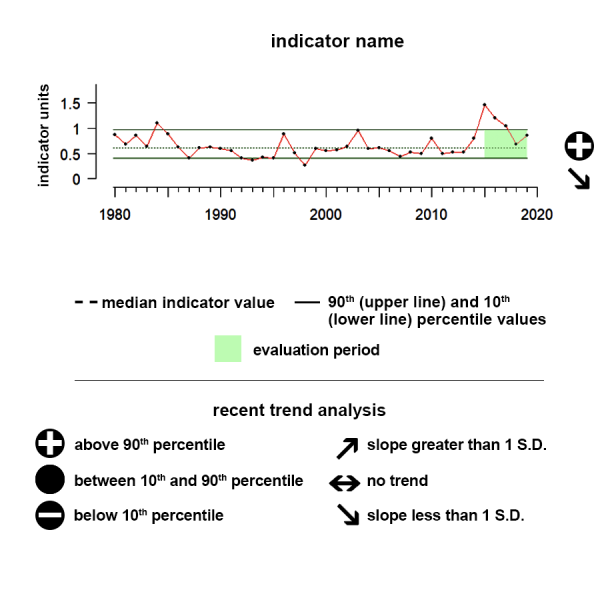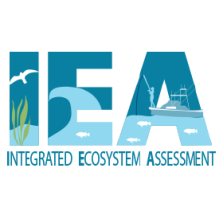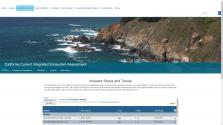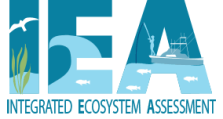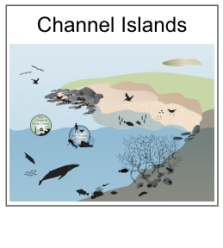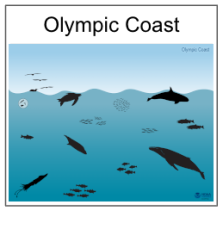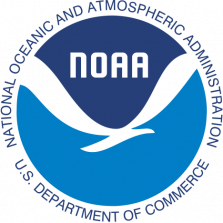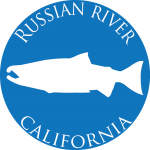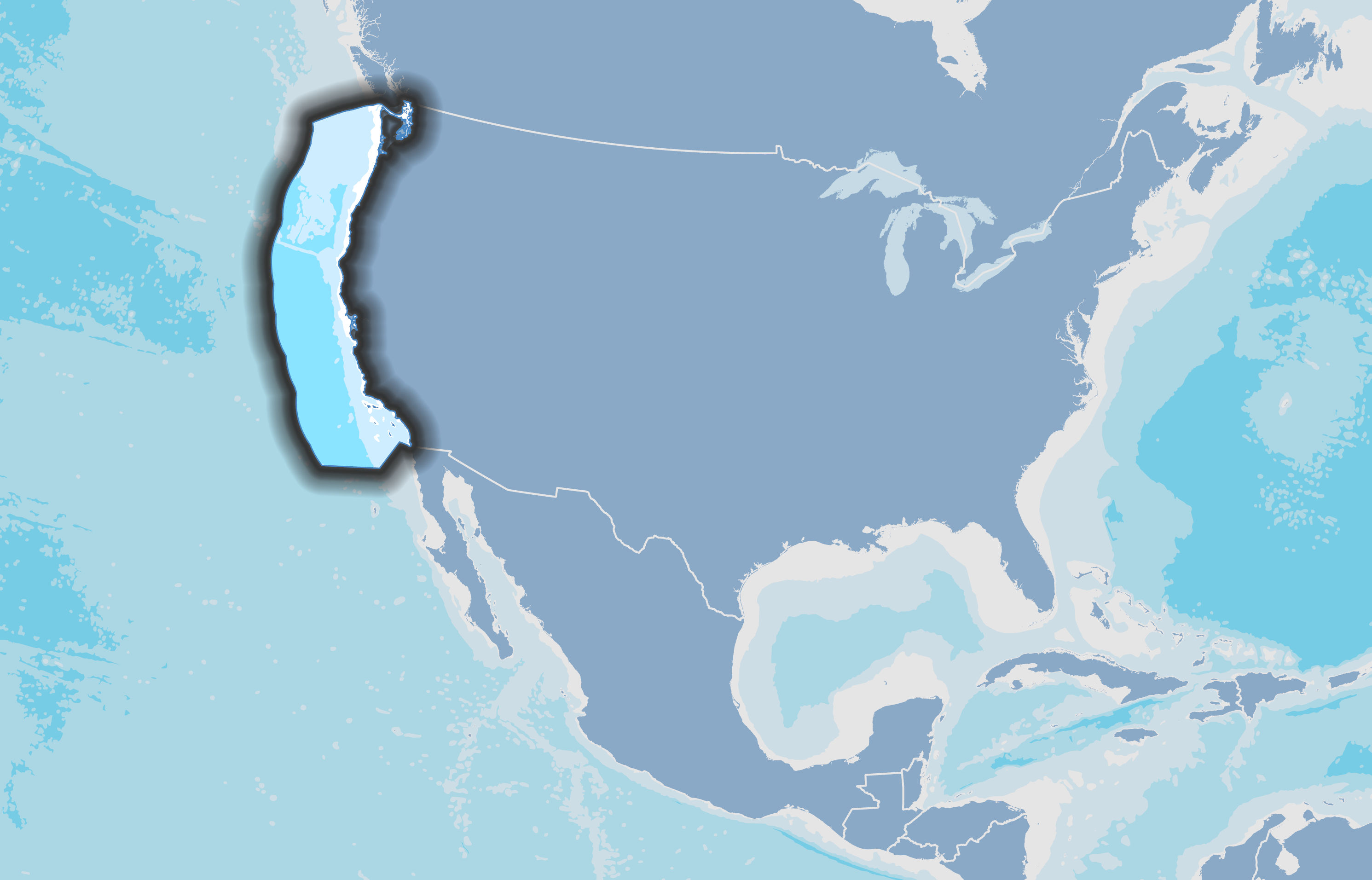
The California Current Ecosystem (CCE) is a dynamic environment in the eastern North Pacific Ocean. Spanning nearly 3,000 km from southern British Columbia, Canada to Baja California, Mexico, the California Current encompasses the United States Exclusive Economic Zone, the coastal land-sea interface, and adjacent terrestrial watersheds along the West Coast. This highly productive coastal ecosystem is fueled by the seasonal upwelling of cold, nutrient-rich water. These seasonal episodes of productivity support populations of krill, squid, sardines, and other species that are fed upon by larger fishes, seabirds and marine mammals. Broad-scale climate forcing related to El Niño / La Niña events and the Pacific Decadal Oscillation help determine how much upwelling will occur at points along the coast in a given year. These waters support some of the most productive fisheries in the world. Millions of dollars are paid directly to fishermen from commercial fishery landings, and over 100,000 jobs on and off the water are supported by the coast's seafood industry. Fisheries are an important part of California Current's economy, culture, and history and provide a wide variety of sustainable and local seafood.
Understanding the Time series plots
Time series plots show the changes in each indicator as a function of time, over the period 1980-present. Each plot also shows horizontal lines that indicate the median (middle) value of that indicator, as well as the 10th and 90th percentiles, each calculated for the entire period of measurement. Time series plots were only developed for datasets with at least 10 years of data. Two symbols located to the right of each plot describe how recent values of an indicator compare against the overall series. A black circle indicates whether the indicator values over the last five years are on average above the series 90th percentile (plus sign), below the 10th percentile (minus sign), or between those two values (solid circle). Beneath that an arrow reflects the trend of the indicator over the last five years; an increase or decrease greater than one standard deviation is reflected in upward or downward arrows respectively, while a change of less than one standard deviation is recorded by a left-right arrow.
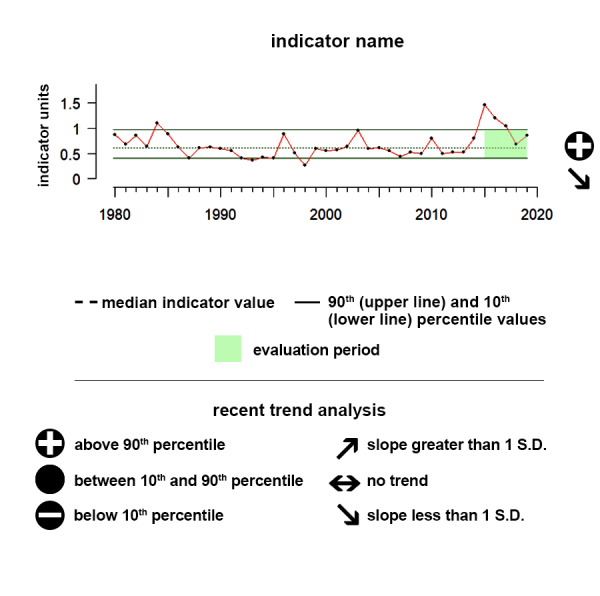
Pacific Decadal Oscillation (PDO)
During the last five years, the PDO indicator has trended downward, shifting from positive phase to negative phase in 2019.
Values correspond to Index scores
Description of time series:
Positive PDO values typically mean cool surface water conditions in the interior of the North Pacific Ocean and warm surface waters along the North American Pacific Coast while negative PDO conditions typically mean warm surface water conditions in the interior to the North Pacific Ocean and cool surface waters along the North American Pacific Coast. During the last five years, the PDO indicator has trended downward, shifting from positive phase to negative phase in 2019.
Description of Pacific Decadal Oscillation (PDO):
The Pacific Decadal Oscillation (PDO) is a long-term pattern of Pacific climate variability that comprises multiple physical forcing mechanisms. The extreme phases of this climatic condition are classified as warm or cool, based on deviations from average ocean temperature in the northeast and central North Pacific Ocean. When the PDO has a positive value, sea surface temperatures are below average (cool) in the interior North Pacific and warm along the Pacific Coast. When the PDO has a negative value, the climate patterns are reversed, with above average sea surface temperatures in the interior and sea surface temperatures below average along the North American coast. On shorter timescales a positive (negative) PDO is often related to El Niño (La Niña). The PDO waxes and wanes on longer timescales as well; warm and cold phases may persist for decades. Major changes in northeast Pacific marine ecosystems have been correlated with phase changes in the PDO. Warm phases have seen enhanced coastal ocean biological productivity in Alaska and inhibited productivity off the west coast of the United States, while cold PDO phases have seen the opposite, north-south pattern of marine ecosystem productivity. We present data from the Pacific Islands, Alaska, and California Current regions
Data Background:
Climate indicator data was accessed from the NOAA NCEI (https://www.NCEI.noaa.gov/teleconnections/pdo/data.csv). The data plotted are unitless and based on Sea Surface Temperature anomalies averaged across a given region.
El Niño-Southern Oscillation (Oceanic Niño Index)
After an El Nino event that spanned much of 2023, conditions transitioned to ENSO neutral in the spring of 2024 and have remained neutral since then.
Values correspond to Index scores
Description of time series:
The Oceanic Niño Index (ONI) is NOAA’s primary index for monitoring the El Niño-Southern Oscillation climate pattern. It is based on Sea Surface Temperature values in a particular part of the central equatorial Pacific, which scientists refer to as the Niño 3.4 region. Positive values of this indicator, greater than +0.5, indicate warm El Niño conditions, while negative values, less than -0.5, indicate cold La Niña conditions. Values between +0.5 and -0.5 are considered ENSO neutral. The ONI shifted from La Nina conditions to neutral conditions in early 2023, and with continued sea-surface warming now indicate that an El Nino has begun.
Description of El Niño-Southern Oscillation (ENSO):
El Niño and La Niña are opposite phases of the El Niño-Southern Oscillation (ENSO), a cyclical condition occurring across the Equatorial Pacific Ocean with worldwide effects on weather and climate. During an El Niño, surface waters in the central and eastern equatorial Pacific become warmer than average and the trade winds - blowing from east to west - greatly weaken. During a La Niña, surface waters in the central and eastern equatorial Pacific become much cooler, and the trade winds become much stronger. El Niños and La Niñas generally last about 6 months but can extend up to 2 years. The time between events is irregular, but generally varies between 2-7 years. To monitor ENSO conditions, NOAA operates a network of buoys, which measure temperature, currents, and winds in the equatorial Pacific.
This climate pattern impacts people and ecosystems around the world by affecting large scale areas of tropical convection, and by extension, the jet streams. Interactions between the ocean and atmosphere alter weather globally and can result in severe storms or mild weather, drought or flooding. Beyond “just” influencing the weather and ocean conditions, these changes can produce secondary results that influence food supplies and prices, forest fires and flooding, and create additional economic and political consequences. For example, along the west coast of the U.S., warm El Niño events are known to inhibit the delivery of nutrients from subsurface waters, suppressing local fisheries. El Niño events are typically associated with fewer hurricanes in the Atlantic while La Niña events typically result in greater numbers of Atlantic hurricanes.
Data Background:
ENSO ONI data was accessed from NOAA’s Climate Prediction Center (https://origin.cpc.ncep.noaa.gov/products/analysis_monitoring/ensostuff/ONI_v5.php). The data are plotted in degrees Celsius and represent Sea Surface Temperature anomalies averaged across the so-called Niño 3.4 region in the east-central tropical Pacific between 120°-170°W and 5°S-5°N .
California Current SST
During the last five years there has been no significant trend and values have remained within the 10th and 90th percentiles.
Sea surface temperature is defined as the average temperature of the top few millimeters of the ocean. Sea surface temperature monitoring tells us how the ocean and atmosphere interact, as well as providing fundamental data on the global climate system
Data Interpretation:
Time series: The time series shows the integrated sea surface temperature for the California Current region. During the last five years there has been no significant trend and values have remained within the 10th and 90th percentiles.
Indicator and source information:
The SST product used for this analysis is the NOAA Coral Reef Watch CoralTemp v3.1 SST composited monthly (https://coralreefwatch.noaa.gov/product/5km/index_5km_sst.php) accessed from CoastWatch (https://oceanwatch.pifsc.noaa.gov/erddap/griddap/CRW_sst_v3_1_monthly.g…).
Great Lakes SST data were accessed from (https://coastwatch.glerl.noaa.gov/glsea/glsea.html).
The data are plotted in degrees Celsius.
Data background and limitations:
The NOAA Coral Reef Watch (CRW) daily global 5km Sea Surface Temperature (SST) product, also known as CoralTemp, shows the nighttime ocean temperature measured at the surface. The CoralTemp SST data product was developed from two, related reanalysis (reprocessed) SST products and a near real-time SST product. Monthly composites were used for this analysis.
California Current Sea Level
During the last five years, there has been no trend and values are between the 10th and 90th percentiles of all data.
Sea level varies due to the force of gravity, the Earth’s rotation and irregular features on the ocean floor. Other forces affecting sea levels include temperature, wind, ocean currents, tides, and other similar processes.
Description of time series:
The time series shows the relative sea level for this region. During the last five years, there has been no trend and values are between the 10th and 90th percentiles of all data.
Indicator and source information:
NOAA monitors sea levels using tide stations and satellite laser altimeters. Tide stations around the globe tell us what is happening at local levels, while satellite measurements provide us with the average height of the entire ocean. Taken together, data from these sources are fed into models that tell us how our ocean sea levels are changing over time. For this site, data from tide stations around the US were combined to create regionally averaged records of sea-level change since 1980. We present data for all regions.
Data background and limitations:
Sea level data presented here are measurements of relative sea level, water height as compared to nearby land level, from NOAA tide gauges that have >20 years of hourly data served through NOAA’s Center for Operational Oceanographic Products and Services (CO-OPS) Tides and Currents website. These local measurements are regionally averaged by taking the median value of all the qualifying stations within a region. The measurements are in meters and are relative to the year 2000.
California Current 31N to 34N Upwelling
Between 2018 and 2023 BEUTI showed no trend and the average of the last 5 years remains between the 10th and 90th percentiles.
Values indicate the vertical transport of nitrate averaged from 31 to 34 degrees north (southern California Bight) from March-July of each year.
Description of time series:
Between 2018 and 2023 BEUTI showed no trend and the average of the last 5 years remains between the 10th and 90th percentiles.
Indicator data and source information:
Values of BEUTI are provided by NMFS/SWFSC; detailed information about these indices can be found at https://oceanview.pfeg.noaa.gov/products/upwelling/cutibeuti. Values represent March-July Means for each year.
Data source:
https://oceanview.pfeg.noaa.gov/products/upwelling/cutibeuti
California Current 35N to 40N Upwelling
Between 2018 and 2023 BEUTI showed no trend and the average of the last 5 years remains between the 10th and 90th percentiles.
Values indicate the vertical transport of nitrate averaged from 35 to 40 degrees north (central/northern California).
Description of time series:
Between 2018 and 2023 BEUTI showed no trend and the average of the last 5 years remains between the 10th and 90th percentiles.
Indicator data and source information:
Values of BEUTI are provided by NMFS/SWFSC; detailed information about these indices can be found at https://oceanview.pfeg.noaa.gov/products/upwelling/cutibeuti Values represent March-July Means for each year.
Data source:
https://oceanview.pfeg.noaa.gov/products/upwelling/cutibeuti
California Current Upwelling 41N to 47N
Between 2018 and 2023 BEUTI showed a significant downward trend and the average of the last 5 years remains between the 10th and 90th percentiles.
Values indicate the vertical transport of nitrate averaged from 41 to 47 degrees north (northern California/Oregon/Washington).
Description of time series:
Between 2018 and 2023 BEUTI showed a significant downward trend and the average of the last 5 years remains between the 10th and 90th percentiles.
Indicator data and source information:
Values of BEUTI are provided by NMFS/SWFSC; detailed information about these indices can be found at https://oceanview.pfeg.noaa.gov/products/upwelling/cutibeuti. Values represent March-July Means for each year.
Data source:
https://oceanview.pfeg.noaa.gov/products/upwelling/cutibeuti
California Current Heatwave Intensity
During the last five years there has been no trend and the five-year average is between the 10th and 90th percentiles of all observed data in the time series.
Values indicate cumulative annual heatwave intensity and duration in a region in degree-days
Description of Time Series: This time series shows the average integrated degree day value for the California Current region. During the last five years there has been no trend and the five-year average is between the 10th and 90th percentiles of all observed data in the time series.
Indicator Source Information:
The marine heatwave data shown here are calculated by NOAA’s National Centers for Environmental Information using Optimum Interpolation Sea Surface Temperature (OISST) data. The NOAA 1/4° OISST is a long term Climate Data Record that incorporates observations from different platforms (satellites, ships, buoys and Argo floats) into a regular global grid. The dataset is interpolated to fill gaps on the grid and create a spatially complete map of sea surface temperature. Satellite and ship observations are referenced to buoys to compensate for platform differences and sensor biases.
Data Background and Caveats:
Heatwave metrics are calculated using OISST, a product that uses some forms of interpolation to fill data gaps. Heatwaves are defined by Hobday et al., 2016 as distinct events where SST anomaly reaches the 90th percentile in a pixel for at least 5 days, separated out by 3 or more days.
California Current Heatwave Area
During the last five years there has been no trend and the five-year average is between the 10th and 90th percentiles of all observed data in the time series.
Values indicate monthly percent of an LME area affected by heatwave
Description of Time Series: This time series shows the monthly heatwave spatial coverage for the California Current Region. During the last five years there has been no trend and the five-year average is between the 10th and 90th percentiles of all observed data in the time series.
Indicator Source Information:
The marine heatwave data shown here are calculated by NOAA’s National Centers for Environmental Information using Optimum Interpolation Sea Surface Temperature (OISST) data. The NOAA 1/4° OISST is a long term Climate Data Record that incorporates observations from different platforms (satellites, ships, buoys and Argo floats) into a regular global grid. The dataset is interpolated to fill gaps on the grid and create a spatially complete map of sea surface temperature. Satellite and ship observations are referenced to buoys to compensate for platform differences and sensor biases.
Data Background and Caveats:
Heatwave metrics are calculated using OISST, a product that uses some forms of interpolation to fill data gaps. Heatwaves are defined by Hobday et al., 2016 as distinct events where SST anomaly reaches the 90th percentile in a pixel for at least 5 days, separated out by 3 or more days.
California Current pCO2
Between 2019 and 2024 in pCO2 showed a significant increasing trend and is at the upper range of historical values.
The pCO2 data shown here as an ecosystem indicator of ocean acidification represent regional monthly averages of these mapped estimates.
Description of Time Series: Between 2019 and 2024 in pCO2 showed a significant increasing trend and is at the upper range of historical values.
Description of Sea Surface pCO2:
Carbon dioxide (CO2) released from fossil fuel burning and other human activities (also known as “anthropogenic CO2”) not only accumulates in Earth’s atmosphere, but is also absorbed by seawater at the ocean surface. This process represents a double-edged sword for the planet: CO2, which has negative consequences for climate change, is removed from the atmosphere but it also contributes to the acidification of ocean waters, which can harm sea life like corals and crabs. The partial pressure of CO2 in seawater (pCO2) represents the relative amount of CO2 in the water. It is a critical metric for calculating the exchange of CO2 across the air–sea interface and for tracking the effects of anthropogenic carbon on surface ocean chemistry.
Data Source:
Global observations of pCO2 from automated shipboard systems that take in and analyze water while a vessel is moving are aggregated in the Surface Ocean CO2 Atlas (SOCAT; Bakker et al., 2016). These shipboard observations have been combined with data from available observational, model-based, and satellite products (e.g., sea-surface temperature, salinity, and wind speed) to create estimates of surface ocean pCO2 in U.S. Large Marine Ecosystems over multiple decades, using a technique known as machine learning (Sharp et al., 2024). The pCO2 data shown here as an ecosystem indicator of ocean acidification represent regional annual averages of these mapped estimates. Uncertainty in pCO2 is estimated from a data-based validation of the machine-learning algorithms for each Large Marine Ecosystem, scaled by the data coverage in a given month. The complete dataset is available at https://www.ncei.noaa.gov/data/oceans/ncei/ocads/metadata/0287551.html.
Close
California Current pH
Between 2019 and 2024 pH showed a significant decreasing trend and is at the lower end of the range of historical values.
The pH data shown here as an ecosystem indicator of ocean acidification represent regional monthly averages of these estimates.
Description of Time Series: Between 2019 and 2024 pH showed a significant decreasing trend and is at the lower end of the range of historical values.
Description of Sea Surface pH:
Man-made (or “anthropogenic”) CO2 that is taken up by the ocean influences the chemistry of seawater, resulting in an increase in hydrogen ion concentration of the surface ocean (i.e. a decrease in surface ocean pH). pH can be viewed as a “master variable” in ocean chemistry, controlling acid-base balance in the sea. It is also a common way to quantify ocean acidification: average surface ocean pH has decreased by more than 0.1 units since the beginning of the industrial revolution (Jiang et al., 2023).
Data Source:
Mapped estimates of surface-ocean pCO2 in U.S. Large Marine Ecosystems (LME’s) (Sharp et al., 2024), based on observations from the SOCAT database, have been paired with another key ocean-carbon variable called total alkalinity (TA), estimated from salinity, temperature, and spatial information using algorithms called ESPERs (Carter et al., 2021), to calculate surface ocean pH across the U.S. LME’s. The pH data shown here as an ecosystem indicator of ocean acidification represent regional annual averages of these estimates. Uncertainty in pH is determined by propagating pCO2 and TA uncertainties through calculations, using reasonable estimates of uncertainty in required chemical constants and ancillary variables. The complete dataset is available at https://www.ncei.noaa.gov/data/oceans/ncei/ocads/metadata/0287551.html.
California Current Aragonite
Between 2019 and 2024 Sea Surface Ωar showed a downward trend but was mostly within the range of historical values.
The Ωar data shown here as an ecosystem indicator of ocean acidification represent regional averages of these estimates.
Description of Time Series: Between 2019 and 2024 Sea Surface Ωar showed a downward trend but was mostly within the range of historical values.
Description of Sea Surface Ωar:
Many marine animals and plants build shells or other hard parts from the minerals aragonite and calcite, which are forms of the chemical compound calcium carbonate. The chemical building blocks of these minerals are calcium and carbonate ions, which are common constituents of seawater. However, one effect of ocean acidification is to reduce the carbonate ion concentration in seawater, making it more difficult for these minerals to form. The chemical expression that describes the tendency of these minerals to form at equilibrium is called the saturation state of that mineral: higher values support mineral formation, while lower values inhibit mineral formation, or even promote the dissolution of these minerals. We present here saturation-state estimates for the mineral aragonite (Ωar), which is used by many marine organisms including corals, mollusks, and some zooplankton to create hard parts. At 20°C, saturation state of the mineral calcite is about 50% higher than aragonite (Mucci, 1983)
Data Source:
Mapped estimates of surface-ocean pCO2 in U.S. Large Marine Ecosystems (LME’s) (Sharp et al., 2024), based on observations from the SOCAT database, have been paired with another key ocean-carbon variable called total alkalinity (TA), estimated from salinity, temperature, and spatial information using algorithms called ESPERs (Carter et al., 2021), to calculate surface-ocean Ωar across the U.S. LME’s. The Ωar data shown here as an ecosystem indicator of ocean acidification represent regional averages of these estimates. Uncertainty in Ωar is determined by propagating pCO2 and TA uncertainties through calculations, using reasonable estimates of uncertainty in required chemical constants and ancillary variables. The complete dataset is available at https://www.ncei.noaa.gov/data/oceans/ncei/ocads/metadata/0287551.html.
California Current Chlorophyll-a
During the last five years there has been no trend while values have remained within the 10th and 90th percentiles of all observed data in the time series.
Chlorophyll a, a pigment produced by phytoplankton, can be measured to determine the amount of phytoplankton present in water bodies. From a human perspective, high values of chlorophyll a can be good (abundance of nutritious diatoms as food for fish) or bad (Harmful Algal Blooms that may cause respiratory distress for people), based on the associated phytoplankton species.
Data Interpretation:
Time series: This time series shows the average concentration levels of chlorophyll a for the California Current region. During the last five years there has been no trend while values have remained within the 10th and 90th percentiles of all observed data in the time series.
Indicator and source information:
Chlorophyll-a concentration values for this indicator were obtained using data from the European Spatial Agency (ESA) that is a validated, error-characterized, Essential Climate Variable (ECV) and climate data record (CDR) from satellite observations specifically developed for climate studies. The dataset (v56.0) is created by bandshifting the reflectances values from SeaWiFS, MODIS and VIIRS to MERIS wavebands if necessary, and SeaWiFS and MODIS were corrected for inter-sensor bias when compared with MERIS in the 2003-2007 period. VIIRS and OLCI were also corrected to MERIS levels, via a two-stage process comparing against the MODIS-corrected-to-MERIS-levels (2012-2013 for VIIRS and 2016-2019 for OLCI).
Source: https://climate.esa.int/en/projects/ocean-colour/key-documents/
https://docs.pml.space/share/s/fzNSPb4aQaSDvO7xBNOCIw
Annual means for each LME were calculated from the average of the 12 monthly means in that year on a pixel by pixel basis. Then for each year, the median average was taken spatially to yield one value per year per LME. The overall “National Annual Mean” mean was calculated as the average of all LME annual means. See the Data Background section for more details.
Data background and limitations:
Satellite chlorophyll a data was extracted for each LME from the ESA OC-CCI v6.0 product. These 4 km mapped, monthly composited data were - averaged over each year to produce pixel by pixel annual composites, then the spatial median was calculated for each LME, resulting in one value per year per LME. This technique was used for each LME from North America and Hawaii. The overall “National Annual Mean” was calculated as the average of all the LME annual means. Phytoplankton concentrations are highly variable (spatially and temporally), largely driven by changing oceanographic conditions and seasonal variability.
California Current Zooplankton
Between 2016 and 2021 the average concentration of zooplankton biomass showed no significant trend and was similar to historical values.
Description of time series:
Between 2016 and 2021 the average concentration of zooplankton biomass showed no significant trend and was similar to historical values.
Indicator information
Zooplankton data for each region were obtained from the NOAA Fisheries Coastal & Oceanic Plankton Ecology, Production, & Observations Database, an integrated data set of quality-controlled, globally distributed plankton biomass and abundance data with common biomass units and served in a common electronic format with supporting documentation and access software. California Current specific data comes from the California Cooperative Oceanic Fisheries Investigations (CalCOFI) program: https://calcofi.org/
Data Background and Caveats:
Unlike previous years, all value are now standardized to "ml/m3". For example, EcoMon data units went from "ml/100m3" to just "ml/m3", but that did not affect the shape of the trends as it is a linear multiplicative factor. CalCOFI, however, went from "ml/m2" to "ml/m3", and the trend has changed noticeably. It is now noisier and no clear trend. One converts "ml/m2" to "ml/m3" by dividing by the towing depth (m). That is a non-linear muplicative factor, so it can affect each data point and change the data shape.
Finally, a log10 value frequency histogram of the raw data values showed that 99.9% of the DV data values were less than 15 ml/m3. To reduce the impact of large outliers (i.e., due to a large jellyfish or an algal mat caught in the net), any DV value greater than 15 was capped at a value of just 15. Again, this would only affect < 0.1% of the data. In some extreme cases, original DV values were over 100+ ... which greatly skewed the means and trends if not removed. This is actually standard practice. CalCOFI offers both a "large" and "small" DV value (with the latter having large values removed), for example, and some programs automatically remove any plankter larger than the 5 cm length from the net sample before measuring the DV.
Zooplankton data for each region were obtained from the NOAA Fisheries Coastal & Oceanic Plankton Ecology, Production, & Observations Database, an integrated data set of quality-controlled, globally distributed plankton biomass and abundance data with common biomass units and served in a common electronic format with supporting documentation and access software. Source: https://www.st.nmfs.noaa.gov/copepod/about/about-copepod.html
It should be noted that these data are collected across multiple surveys and using multiple sampling approaches for the California Current LME.
Close
California Forage
Due to COVID-19 no data was collected in 2020, so there is no proper status or trend update.
Values correspond to relative coolwater forage abundance index score
Description of time series:
Due to COVID-19 no data was collected in 2020, so there is no proper status or trend update.
Indicator source information:
This indicator is produced with data curated by the California Current Integrated Ecosystem Assessment team. This general indicator of average combined forage biomass includes the following species but is often dominated by anchovy and sardine:
- larval anchovy (Engraulis mordax);
- larval California smoothtongue (Leuroglossus stilbius);
- larval croakers (Genyonemus spp.);
- larval eared blacksmelt (Lipolagus ochotensis);
- larval English sole (Parophrys vetulus);
- southern mesopelagic larval fish (NA, multi-species);
- larval hake (Merluccius productus);
- larval jack mackerel (Trachurus symmetricus);
- larval market squid (Doryteuthis opalescens);
- Larval northern lampfish (Stenobrachius leucopsarus);
- larval Pacific mackerel (Scomber japonicus) ;
- larval sanddab (Citharichthys spp.);
- larval sardine (Sardinops sagax);
- Larval rockfishes (Sebastes spp.);
- larval slender sole (Lyopsetta exilis)
Data background and caveats:
Units, time series, and species vary by region for this indicator, so no national score is provided. Best practices and caveats vary by region:
- CCE
- This indicator only includes data from surveys of the southern extent of the California Current region in the Spring. Index calculations are as follows: Larval fish data summed across all stations of the CalCOFI survey in spring (units are in number under 10 sq. m of surface area; ln(abundance+1)).
California Current Seabirds
The Southern California Current Density Anomaly of Seabirds over the last 5 years was similar to historical values and showed no trend.
Values indicate estimated seabird abundance using a relative population anomaly score
Description of the Time Series
The California Current Density Anomaly of Seabirds over the last 5 years was similar to historical values and showed no trend.
Indicator and Source Information:
Data are from CalCOFI surveys (https://calcofi.org/data/marine-ecosystem-data/seabirds/), courtesy of Dr. Bill Sydeman of the Farallon Institute (wsydeman@faralloninstitute.org) and displays information about Cassin’s Auklet (Ptychoramphus aleuticus) observed in Spring. Data are shipboard counts, transformed as ln(bird density/km2 +1) and expressed as an anomaly of log density relative to the long-term mean.
Data Background and Caveats:
Data displayed here only represent the estimated density of one species for one season in one region of the California Current Ecosystem. Values for the last three years are exactly the same, as the number of individuals identified has been the same.
California Current Overfished Stocks
Between 2018 and 2023 the number of overfished stocks shows no trend.
The x-axis represents years. The y-axis represents the number of fish stocks or fish populations that are deemed by NOAA as overfished. Overfished means the population of fish is too low. Therefore the population cannot support a large amount of fishing.
Description of time series:
The series shows the number of fish populations that have been listed as overfished since 2000. Between 2018 and 2023 the number of overfished stocks shows no trend.
Description of Overfished stocks:
An overfished stock is a population of fish that is too low. A stock that is experiencing overfishing has an annual rate of catch that is too high. Therefore the population cannot support that level of fishing and is below that level is deemed “overfished.” A fish population can be “overfished” as the result of many factors, including overfishing, as well as habitat degradation, pollution, climate change, and disease. The Magnuson-Stevens Act mandates that overfished stocks and stocks experiencing overfishing be reported annually. Stock status is determined by NOAA, based on the results of stock assessments.
Data Source:
Data were obtained from the NOAA Fisheries Fishery Stock Status website. Stocks that met the criteria for overfished status were summed by year for each region.
California Current ESA
Gauge and Trend Analyses were not appropriate for marine mammal data.
Values Correspond to the Number of ESA Threatened or Endangered Species in a given region
Data Interpretation
Gauge and Trend Analyses were not appropriate for marine mammal data.
Description of Threatened and Endangered Marine Mammals (ESA):
NOAA Fisheries is responsible for the protection, conservation, and recovery of endangered and threatened marine and anadromous species under the Endangered Species Act (ESA). The ESA aims to conserve these species and the ecosystems they depend on. Under the ESA, a species is considered endangered if it is in danger of extinction throughout all or a significant portion of its range, or threatened if it is likely to become endangered in the foreseeable future throughout all or a significant portion of its range See a species directory of all the threatened and endangered marine species under NOAA Fisheries jurisdiction, including marine mammals.
Under the ESA, a species must be listed if it is threatened or endangered because of any of the following 5 factors:
1) Present or threatened destruction, modification, or curtailment of its habitat or range;
2) Over-utilization of the species for commercial, recreational, scientific, or educational purposes;
3) Disease or predation;
4) Inadequacy of existing regulatory mechanisms; and
5) Other natural or manmade factors affecting its continued existence.
The ESA requires that listing determinations be based solely on the best scientific and commercial information available; economic impacts are not considered in making species listing determinations and are prohibited under the ESA. There are two ways by which a species may come to be listed (or delisted) under the ESA:
- NOAA Fisheries receives a petition from a person or organization requesting that NOAA lists a species as threatened or endangered, reclassify a species, or delist a species.
- NOAA Fisheries voluntarily chooses to examine the status of a species by initiating a status review of a species.
Data Background and Caveats
NOAA Fisheries goes through required regulatory steps to list, reclassify, or delist a species under the ESA. For more information, see a step-by-step description of the ESA listing process. The listing process requires time and resources; as a result, the timing and number of listed marine species is not necessarily indicative of the actual number of currently endangered or threatened species and the exact timing of when these species became eligible to be listed under the ESA. Many marine species were initially listed when the ESA was passed in 1973; others have taken more time to be listed, and some have been reclassified or delisted since then.
California Current MMPA
Gauge and Trend Analyses were not appropriate for marine mammal data.
Values correspond to the number of MMPA Strategic or Depleted Marine Mammal Species listed each year in each region
Data Interpretation
Gauge and Trend Analyses were not appropriate for marine mammal data.
Description of Marine Mammal Strategic and Depleted Stocks (MMPA):
A stock is defined by the Marine Mammal Protection Act (MMPA), as a group of marine mammals of the same species or smaller taxa in a common spatial arrangement, that interbreed when mature. See a list of the marine mammal stocks NOAA protects under the MMPA.
A strategic stock is defined by the MMPA as a marine mammal stock—
- For which the level of direct human-caused mortality exceeds the potential biological removal level or PBR (defined by the MMPA as the maximum number of animals, not including natural mortalities, that may be removed from a marine mammal stock while allowing that stock to reach or maintain its optimum sustainable population);
- Which, based on the best available scientific information, is declining and is likely to be listed as a threatened species under the Endangered Species Act (ESA) within the foreseeable future; or
- Which is listed as a threatened or endangered species under the ESA, or is designated as depleted under the MMPA.
A depleted stock is defined by the MMPA as any case in which—
- The Secretary of Commerce, after consultation with the Marine Mammal Commission and the Committee of Scientific Advisors on Marine Mammals established under MMPA title II, determines that a species or population stock is below its optimum sustainable population;
- A State, to which authority for the conservation and management of a species or population stock is transferred under section 109, determines that such species or stock is below its optimum sustainable population; or
- A species or population stock is listed as an endangered species or a threatened species under the ESA.
Data Background and Caveats
NOAA Fisheries prepares marine mammal stock assessment reports to track the status of marine mammal stocks. Some marine mammal stocks are thriving, while others are declining, and we often don’t know all the reasons behind a species or stock’s population trend. Because of this variability, it is difficult to indicate the state of an ecosystem or specific region using stock assessment data for marine mammal species that often range across multiple ecosystems and regions.
Close
California Current Marine Species Latitude
Between 2018 and 2023 the average species latitudinal shift showed no trend.
Values indicate annual cumulative change in centroid across all species in a region in degrees N
Description of Time Series: Between 2018 and 2023 the average species latitudinal shift showed no trend.
Indicator Source Information:
This data was obtained from the Distribution Mapping and Analysis Portal (DisMAP). provides important information for fisheries management including which species are caught where and at what depth.The latitudinal (or depth) centroid is the biomass-weighted center of a population’s distribution. This metric is calculated by the DisMAP portal team using the interpolated biomass distribution surface they generated from the survey catch data, such that the latitudinal (or depth) centroids are the mean latitude (or depth) of the species distribution, where each raster cell latitude (or depth) is weighted by the value of weight-per-unit-effort for that cell. Scientists at NOAA use this data to calculate each species’ centroid as the mean latitude and depth of catch in the survey, weighted by biomass. The centroid for each species is calculated for each year after standardizing the data to ensure that the measure is consistent over time despite changes in survey techniques and total area surveyed. This data provides important information for fisheries management including which species are caught where and at what depth.
Data Background and Caveats:
The regional and national marine species distributions shown here represent the average shift in the centroid of a selected core set of species that are caught every year in surveys conducted in each region. These species represent a wide range of habitats and species types. As species distributions respond to many environmental and biological factors, combining data from multiple diverse species allows for a more complete picture of the general trends in marine species distribution. In order to more easily track and display changes in these distributions, the first year is standardized to zero. Thus, the indicator represents relative change in distribution from the first survey year.
Close
California Current Marine Species Depth
Between 2018 and 2023 the average species water column depth shift shows a significant downward trend, indicating the distribution moved deeper.
Values Indicate annual cumulative change in average species centroid depth in meters - for example, a value of -5 indicates the species centroid moving deeper by 5m.
Description of Time Series: Between 2018 and 2023 the average species water column depth shift shows a significant downward trend, indicating the distribution moved deeper.
Indicator Source Information:
This data was obtained from the Distribution Mapping and Analysis Portal (DisMAP). The latitudinal (or depth) centroid is the biomass-weighted center of a population’s distribution. This metric is calculated by the DisMAP portal team using the interpolated biomass distribution surface they generated from the survey catch data, such that the latitudinal (or depth) centroids are the mean latitude (or depth) of the species distribution, where each raster cell latitude (or depth) is weighted by the value of weight-per-unit-effort for that cell. The centroid for each species is calculated for each year after standardizing the data to ensure that the measure is consistent over time despite changes in survey techniques and total area surveyed. This data provides important information for fisheries management including which species are caught where and at what depth.
Data Background and Caveats:
The regional and national marine species distributions shown here represent the average centroid of a selected core set of species that are caught every year of the surveys in a region. These species represent a wide range of habitats and species types. As species distributions respond to many environmental and biological factors, combining data from multiple diverse species allows for a more complete picture of the general trends in marine species distribution. In order to more easily track and display changes in these distributions, the first year is standardized to zero. Thus, the indicator represents relative change in distribution from the first survey year.
Close
California Current Ryther Index
The Ryther Index in the California Current ecosystem between 2016 and 2021 was substantially lower than historical patterns, though there is no trend in values.
Values correspond to Ryther Index values
Data Interpretation:
Ecosystem Overfishing Time Series
The Ryther Index in the California Current ecosystem between 2016 and 2021 was substantially lower than historical patterns, though there is no trend in values.
Indicator Source Information:
Landings are reported in tons of round (live) weight for all species or groups except univalve and bivalve mollusks, such as clams, mussels, oysters and scallops, which are reported as weight of meats (excludes shell weight). Landings data may sometimes differ from state-reported landings due to our reporting of mollusks in meat weights rather than gallons, shell weight, or bushels. Also, NMFS includes some species such as kelp and oysters that are sometimes reported by state agricultural agencies and may not be included with state fishery agency landings data.
Data Background and Caveats:
All landings summaries used in the compilation of this indicator only include non-confidential data. Federal statutes prohibit public disclosure of landings (or other information) that would allow identification of the data contributors and possibly put them at a competitive disadvantage. Most summarized landings here are non-confidential, but whenever confidential landings occur they have been combined with other landings and usually reported as "Withheld for Confidentiality" Total landings by state include confidential data and will be accurate, but landings reported by individual species may, in some instances, be misleading due to data confidentiality, which would be minimal given the aggregated nature of how these data were combined.
Landings data do not indicate the physical location of harvest but the location at which the landings either first crossed the dock or were reported from, as associated with major regions in the US
Many fishery products are gutted or otherwise processed while at sea and are landed in a product type other than round (whole) weight. Our data partners have standard conversion factors for the majority of the commonly caught species that convert their landing weights from any product type to whole weight. It is the whole weight that is displayed in our web site landing statistics. Caution should be exercised when using these statistics. An example of a potential problem is when landings statistics are used to monitor fishery quotas. In some situations, specific conversion factors may have been designated in fishery management plans or Federal rule making that differ from those historically used by NOAA Fisheries in reporting landings statistics.
Landings do not include aquaculture products except for clams, mussels and oysters.
Pacific landings summarized by state include an artificial “state” designation of “At-Sea Process, Pac.” This designation was assigned to landings consisting of primarily whiting caught in the EEZ off Washington and Oregon that were processed aboard large vessels while at sea. No Pacific state lists these fish on their trip tickets which are used to report state fishery landing, hence the at-sea processor designation was used to insure that they would be listed as a U.S. landing.
Landing summaries are compiled from data bases that overlap in time and geographic coverage, and come from both within and outside of NOAA Fisheries.
Ecosystem overfishing metrics also have potential thresholds, usually for the Ryther Index of approximately 1; but we do not report Ryther index values here relative to any threshold. Rather, we report the value of the indices for each region relative to their time series values. Comparison to some regional reports may slightly differ due to the inclusion or exclusion of specific species, but the same general trends are observed and align.
California Current Coastal Population
The 2017 – 2022 average coastal population in the California Current ecosystem was substantially above historic levels, although the recent trend is not different from historical trends.
Values correspond to the total coastal population for a given region
Time Series
The 2017 – 2022 average coastal population in the California Current ecosystem was substantially above historic levels, although the recent trend is not different from historical trends.
Indicator Source Information:
The American Community Survey (ACS) helps local officials, community leaders, and businesses understand the changes taking place in their communities. It is the premier source for detailed population and housing information about our nation.
Data Background and Caveats:
The values represented here are coastal county population estimates for states bordering US Large Marine Ecosystems as calculated by the US Census Bureau from the American Community Survey.
California Current Tourism GDP
Between 2016 and 2021 the average change in coastal county tourism GDP showed no trend.
Values correspond to percent change in the GDP of the Tourism Sector of Coastal Counties in US States that border a region
Description of Time Series: Between 2016 and 2021 the average change in coastal county tourism GDP showed no trend.
Indicator Source Information
Coastal tourism Gross Domestic Product is the total measure (in billions of 2012 dollars) of goods and services provided from various industries involved in tourism services and products along the coast. Data for Coastal Counties come from the US Census Bureau. This dataset represents US counties and independent cities which have at least one coastal border and select non-coastal counties and independent cities based on proximity to estuaries and other coastal counties. The dataset is built to support coastal and ocean planning and other activities pursuant to the Energy Policy Act, Coastal Zone Management Act, Magnuson-Stevens Fishery Conservation and Management Act, National Environmental Policy Act, Rivers and Harbors Act and the Submerged Lands Act.
California Current Tourism GDP
Between 2016 and 2021 the average change in coastal county tourism GDP showed no trend.
Values correspond to percent change in the GDP of the Tourism Sector of Coastal Counties in US States that border a region
Description of Time Series: Between 2016 and 2021 the average change in coastal county tourism GDP showed no trend.
Indicator Source Information
Coastal tourism Gross Domestic Product is the total measure (in billions of 2012 dollars) of goods and services provided from various industries involved in tourism services and products along the coast. Data for Coastal Counties come from the US Census Bureau. This dataset represents US counties and independent cities which have at least one coastal border and select non-coastal counties and independent cities based on proximity to estuaries and other coastal counties. The dataset is built to support coastal and ocean planning and other activities pursuant to the Energy Policy Act, Coastal Zone Management Act, Magnuson-Stevens Fishery Conservation and Management Act, National Environmental Policy Act, Rivers and Harbors Act and the Submerged Lands Act.
California Current Tourism Wage
Between 2016 and 2021 the average total coastal county real wage compensation showed no trend.
Values correspond to millions of dollars of total real wage compensation of the Tourism Sector of Coastal Counties in US States that border a region
Description of Time Series: Between 2016 and 2021 the average total coastal county real wage compensation showed no trend.
Indicator Source Information:
Coastal tourism wage is the measure of wages (nominal) paid to employees in tourism industries along the coast. Data for Coastal Counties come from the US Census Bureau. This dataset represents US counties and independent cities which have at least one coastal border and select non-coastal counties and independent cities based on proximity to estuaries and other coastal counties. The dataset is built to support coastal and ocean planning and other activities pursuant to the Energy Policy Act, Coastal Zone Management Act, Magnuson-Stevens Fishery Conservation and Management Act, National Environmental Policy Act, Rivers and Harbors Act and the Submerged Lands Act.
California Current Total Coastal Employment
Average coastal employment in the California Current ecosystem between 2017 and 2021 was similar to historical levels, with no trend over that period.
Values correspond to total employment in all industries in the coastal counties of a given region
Time Series
Average coastal employment in the California Current ecosystem between 2017 and 2021 was similar to historical levels, with no trend over that period.
Data Source:
Coastal employment numbers were downloaded from the NOAA ENOW Explorer Tool, filtered to present only coastal county values using the Census Bureau’s list of coastal counties within each state. ENOW Explorer streamlines the task of obtaining and comparing economic data, both county and state, for the six sectors dependent on the ocean and Great Lakes: living resources, marine construction, marine transportation, offshore mineral resources, ship and boat building, and tourism and recreation. Data are derived from Economics: National Ocean Watch (ENOW), available on NOAA’s Digital Coast. Of note is that these data fail to include self-employed individuals. Coastal county employment numbers were then summed within each region for reporting purposes.
California Current Commercial Landings
Between 2017 and 2022, commercial landings from the California Current ecosystem were below historic levels, with no apparent trend.
Values correspond to landings in millions of metric tons
Commercial Landings Time Series
Between 2017 and 2022, commercial landings from the California Current ecosystem were below historic levels, with no apparent trend.
Indicator Source Information:
Landings are reported in pounds of round (live) weight for all species or groups except univalve and bivalve mollusks, such as clams, mussels, oysters and scallops, which are reported as pounds of meats (excludes shell weight). Landings data may sometimes differ from state-reported landings due to our reporting of mollusks in meat weights rather than gallons, shell weight, or bushels. Also, NMFS includes some species such as kelp and oysters that are sometimes reported by state agricultural agencies and may not be included with state fishery agency landings data.
Data Background and Caveats:
All landings summaries will return only non confidential landing statistics. Federal statutes prohibit public disclosure of landings (or other information) that would allow identification of the data contributors and possibly put them at a competitive disadvantage. Most summarized landings are non confidential, but whenever confidential landings occur they have been combined with other landings and usually reported as "Withheld for Confidentiality" Total landings by state include confidential data and will be accurate, but landings reported by individual species may, in some instances, be misleading due to data confidentiality.
Landings data do not indicate the physical location of harvest but the location at which the landings either first crossed the dock or were reported from.
Many fishery products are gutted or otherwise processed while at sea and are landed in a product type other than round (whole) weight. Our data partners have standard conversion factors for the majority of the commonly caught species that convert their landing weights from any product type to whole weight. It is the whole weight that is displayed in our web site landing statistics. Caution should be exercised when using these statistics. An example of a potential problem is when landings statistics are used to monitor fishery quotas. In some situations, specific conversion factors may have been designated in fishery management plans or Federal rule making that differ from those historically used by NOAA Fisheries in reporting landings statistics.
The dollar value of the landings are ex-vessel (as paid to the fisherman at time of first sale) and are reported as nominal (current at the time of reporting) values. Users can use the Consumer Price Index (CPI) or the Producer Price Index (PPI) to convert these nominal landing values into real (deflated) values.
Landings do not include aquaculture products except for clams, mussels and oysters.
Pacific landings summarized by state include an artificial “state” designation of “At-Sea Process, Pac.” This designation was assigned to landings consisting of primarily whiting caught in the EEZ off Washington and Oregon that were processed aboard large vessels while at sea. No Pacific state lists these fish on their trip tickets which are used to report state fishery landing, hence the at-sea processor designation was used to insure that they would be listed as a U.S. landing.
Landing summaries are compiled from data bases that overlap in time and geographic coverage, and come from both within and outside of NOAA Fisheries.
California Current Commercial Revenue
Commercial revenue from the California Current ecosystem between 2017 and 2022 was not different than historical patterns, and there is no trend in values.
Values correspond to real revenue is 2022 US Dollars
Commercial Revenue Time Series
Commercial revenue from the California Current ecosystem between 2017 and 2022 was not different than historical patterns, and there is no trend in values.
Indicator Source Information:
Landings are reported in pounds of round (live) weight for all species or groups except univalve and bivalve mollusks, such as clams, mussels, oysters and scallops, which are reported as pounds of meats (excludes shell weight). Landings data may sometimes differ from state-reported landings due to our reporting of mollusks in meat weights rather than gallons, shell weight, or bushels. Also, NMFS includes some species such as kelp and oysters that are sometimes reported by state agricultural agencies and may not be included with state fishery agency landings data.
Data Background and Caveats:
All landings summaries will return only non confidential landing statistics. Federal statutes prohibit public disclosure of landings (or other information) that would allow identification of the data contributors and possibly put them at a competitive disadvantage. Most summarized landings are non confidential, but whenever confidential landings occur they have been combined with other landings and usually reported as "Withheld for Confidentiality" Total landings by state include confidential data and will be accurate, but landings reported by individual species may, in some instances, be misleading due to data confidentiality.
Landings data do not indicate the physical location of harvest but the location at which the landings either first crossed the dock or were reported from.
Many fishery products are gutted or otherwise processed while at sea and are landed in a product type other than round (whole) weight. Our data partners have standard conversion factors for the majority of the commonly caught species that convert their landing weights from any product type to whole weight. It is the whole weight that is displayed in our web site landing statistics. Caution should be exercised when using these statistics. An example of a potential problem is when landings statistics are used to monitor fishery quotas. In some situations, specific conversion factors may have been designated in fishery management plans or Federal rule making that differ from those historically used by NOAA Fisheries in reporting landings statistics.
The dollar value of the landings are ex-vessel (as paid to the fisherman at time of first sale) and are reported as nominal (current at the time of reporting) values. Users can use the Consumer Price Index (CPI) or the Producer Price Index (PPI) to convert these nominal landing values into real (deflated) values.
Landings do not include aquaculture products except for clams, mussels and oysters.
Pacific landings summarized by state include an artificial “state” designation of “At-Sea Process, Pac.” This designation was assigned to landings consisting of primarily whiting caught in the EEZ off Washington and Oregon that were processed aboard large vessels while at sea. No Pacific state lists these fish on their trip tickets which are used to report state fishery landing, hence the at-sea processor designation was used to insure that they would be listed as a U.S. landing.
Landing summaries are compiled from data bases that overlap in time and geographic coverage, and come from both within and outside of NOAA Fisheries.
California Current Recreational Effort
Between 2017 and 2022, recreational fishing effort in California Current is similar to historic levels and shows no trend.
Values correspond to cumulative number of angler trips
Description of time series:
Between 2017 and 2022, recreational fishing effort in California Current is similar to historic levels and shows no trend.
Indicator Source Information
Recreational harvest and effort data pulled from National Summary Query. Units of data are in Effort in Angler Trips and Harvest in numbers of fish.The data from these queries is used by state, regional and federal fisheries scientists and managers to maintain healthy and sustainable fish stocks.
Data Background and Caveats:
To properly interpret this information, it is important to consider the following key points:
- When comparing harvest estimates across an extended time series, note differences in sampling coverage through the years. Some estimates may not be comparable over long time series.
- Changes may occur between preliminary and final estimates and year to year, meaning that the data may change when updated. Please review the Limitations and other sections on the Using the Data page from the source for more information.
California Current Recreational Harvest
Between 2017 and 2021, recreational harvest from California Current are below historic levels, and 2020 levels are around historic lows for the series. There is no significant trend apparent.
Values correspond to harvest in millions of fish
Description of time series:
Between 2017 and 2021, recreational harvest from California Current are below historic levels, and 2020 levels are around historic lows for the series. There is no significant trend apparent.
Indicator Source Information
Recreational harvest and effort data pulled from National Summary Query. Units of data are in Effort in Angler Trips and Harvest in numbers of fish.The data from these queries is used by state, regional and federal fisheries scientists and managers to maintain healthy and sustainable fish stocks.
Data Background and Caveats:
To properly interpret this information, it is important to consider the following key points:
- When comparing catch estimates across an extended time series, note differences in sampling coverage through the years. Some estimates may not be comparable over long time series.
- Changes may occur between preliminary and final estimates and year to year, meaning that the data may change when updated. Please review the Limitations and other sections on the Using the Data page from the source for more information.
California Current Commercial Fishing Engagement
Between 2015 and 2020 the percent of communities moderately or highly engaged in commercial fishing showed an upward trend.
The x-axis on this time series represents years and the y-axis represents the percent of communities that are moderate to highly engaged in commercial fishing across California Current. Commercial fishing engagement is measured by the number permits, fish dealers, and vessel landings across California Current.
Description of time series:
This time series shows the percent of communities moderately or highly engaged in commercial fishing in California Current from 2009 to 2020. Between 2015 and 2020 the percent of communities moderately or highly engaged in commercial fishing showed an upward trend.
Description of California Current Commercial Fishing Engagement:
Commercial fishing engagement is measured by the presence of fishing activity in coastal communities. The commercial engagement index is measured through permits, fish dealers, and vessel landings. A high rank within these indicates more engagement in fisheries. For details on both data sources and indicator development, please see https://www.fisheries.noaa.gov/national/socioeconomics/social-indicator….
NOAA Monitors commercial fishing engagement to better understand the social and economic impacts of fishing policies and regulations on our nation’s vital fishing communities. This and other social indicators help assess a coastal community’s resilience. NOAA works with state and local partners to monitor these indicators. We present data from the Northeast, Southeast, Gulf of Mexico, California Current, Alaska, and Hawaiian Island regions.
Data Source:
Commercial fishing engagement data is from the National Marine Fisheries Service’s social indicator data portal:https://www.st.nmfs.noaa.gov/data-and-tools/social-indicators/ The percentage of all communities in each region classified as medium, medium high, or highly engaged is presented for both recreational and commercial fishing.
California Current Beach Closures
During the last five years, values have remained within the 10th and 90th percentiles of all observed data in the time series and there an upward trend.
Beach closures are the number of days when beach water quality is determined to be unsafe.
Data Interpretation:
Time series: This time series shows the average number of beach closure days in the California Current region from 2000 to 2023. During the last five years, values have remained within the 10th and 90th percentiles of all observed data in the time series and there an upward trend.
Indicator and source information:
Unsafe water quality may have significant impacts on human health, local economies, and the ecosystem. Beach water quality is determined by the concentration of bacteria in the water (either Enterococcus sp. or Escherichia coli).
The US Environmental Protection Agency (EPA) supports coastal states, counties and tribes in monitoring beach water quality, and notifying the public when beaches must be closed. The information presented is from states, counties, and tribes that submit data to the EPA Beach Program reporting database (BEACON). Data obtained from the EPA BEACON 2.0 website have been provided to EPA by the coastal and Great Lakes states, tribes and territories that receive grants under the BEACH Act. Data were refined to closure, by state or territory, by year.
Data background and limitations:
Data compiled by states or territories are combined in regions defined as US Large Marine Ecosystems (LME). Changes in the number of beach closure days may be driven by changes in the number of beaches monitored under the BEACH Act versus by state and local municipalities and not by changes in water and/or air quality. Not all US beach closures are captured in this database, because not all beaches in a state or territory are monitored through the EPA BEACH Act. Data that were not identified to a water body or identified as inland water were not included. Data for beaches monitored by state and local municipalities are not included.
Data from 2020 may be inflated by the Covid-19 pandemic, as there was no consistent way for states to report pandemic-related closures.
California Current Billion Dollar Disasters
The number of disasters over the past 5 years is substantially higher than historical levels of events, and there is a significant increasing trend in the number of events.
Values correspond to the number of events in a given year
Time Series
The number of billion dollar disasters within the California Current ecosystem is quite variable over time, generally fluctuating between zero and four disasters a year. The number of disasters over the past 5 years is substantially higher than historical levels of events, and there is a significant increasing trend in the number of events.
Indicator Source Information:
Billion dollar disaster event frequency data are taken from NOAA’s National Centers for Environmental Information. The number of disasters within each region were summed for every year of available data. Although the number is the count of unique disaster events within a region, the same disaster can impact multiple regions, meaning a sum across regions will overestimate the unique number of disasters.
Data Background and Caveats:
Events are included if they are estimated to cause more than one billion U.S. dollars in direct losses. The cost estimates of these events are adjusted for inflation using the Consumer Price Index (CPI) and are based on costs documented in several Federal and private-sector databases.
Resources
California Current IEA Indicators
The CCIEA evaluates the status of the California Current Ecosystem by interpreting a variety of environmental, biological, economic, and social indicators. Current and historical indicator data are organized categorically with a graphic showing the most recent 5-year trend and status relative to the long-term mean; the graphical interface allows for dynamic plotting and data download options. Many of these indicators are presented to the Pacific Fishery Management Council in annual status reports.
California Current IEA ESR
"We evaluate the status of the California Current Ecosystem by interpreting a variety of environmental, biological, economic, and social indicators. Current and historical indicator data are organized categorically, below, with a graphic showing the most recent 5-year trend and status relative to the long-term mean; the graphical interface allows for dynamic plotting and data download options. Many of these indicators are presented to the Pacific Fishery Management Council in annual status reports."
California Current 2022 Ecosystem Status Report Infographic
A clickable infographic sharing key takeaways from the 2022 IEA program Ecosystem Status Report
Channel Islands National Marine Sanctuary Condition Report
Sanctuary condition reports are tools employed by NOAA to assess the condition and trends of national marine sanctuary resources. Condition reports provide a standardized summary of resources in NOAA’s sanctuaries; drivers and pressures on those resources; current conditions and trends for resources and ecosystem services; and describe existing management responses to the pressures that threaten the integrity of the marine environment.
Channel Islands NMS Clickable Infographic
Please explore the interactive ecosystem for Channel Islands National Marine Sanctuary. Navigate by clicking on icons representing major habitats, species of interest, major climate and ocean drivers, and key human activities. These interactive icons and silhouettes access status and trend data, images, web stories and other supporting content.
Gulf of the Farallones National Marine Sanctuary Condition Report
Sanctuary condition reports are tools employed by NOAA to assess the condition and trends of national marine sanctuary resources. Condition reports provide a standardized summary of resources in NOAA’s sanctuaries; drivers and pressures on those resources; current conditions and trends for resources and ecosystem services; and describe existing management responses to the pressures that threaten the integrity of the marine environment.
Cordell Bank National Marine Sanctuary Condition Report
Sanctuary condition reports are tools employed by NOAA to assess the condition and trends of national marine sanctuary resources. Condition reports provide a standardized summary of resources in NOAA’s sanctuaries; drivers and pressures on those resources; current conditions and trends for resources and ecosystem services; and describe existing management responses to the pressures that threaten the integrity of the marine environment.
Olympic Coast National Marine Sanctuary Condition Report
Sanctuary condition reports are tools employed by NOAA to assess the condition and trends of national marine sanctuary resources. Condition reports provide a standardized summary of resources in NOAA’s sanctuaries; drivers and pressures on those resources; current conditions and trends for resources and ecosystem services; and describe existing management responses to the pressures that threaten the integrity of the marine environment.
Olympic Coast NMS Clickable Infographic
Explore the interactive ecosystem for Olympic Coast National Marine Sanctuary! Navigate by clicking on icons representing our six major habitats, many species of interest, major climate and ocean drivers affecting the Olympic Coast, and the human connections that commonly occur here. The interactive icons and silhouettes you’ll see on the following pages will allow you to access information about the Olympic Coast, including graphs and figures containing status and trend data, maps, images, web stories and other supporting content.
Monterey Bay National Marine Sanctuary Condition Report
Sanctuary condition reports are tools employed by NOAA to assess the condition and trends of national marine sanctuary resources. Condition reports provide a standardized summary of resources in NOAA’s sanctuaries; drivers and pressures on those resources; current conditions and trends for resources and ecosystem services; and describe existing management responses to the pressures that threaten the integrity of the marine environment.
Northwest Association of Networked Ocean Observing Systems (NANOOS)
The Northwest Association of Networked Ocean Observing Systems (NANOOS) is the Regional Association of the national Integrated Ocean Observing System (IOOS) in the Pacific Northwest, primarily Washington and Oregon. NANOOS has strong ties with the observing programs in Alaska and British Columbia through our common purpose and the occasional overlap of data and products.
Central and Northern California Coastal Ocean Observing System (CeNCOOS)
CeNCOOS is a US Government-accredited, regional source for high-quality data, integrated information, and diverse expertise to inform wise and sustainable use of the ocean off Central and Northern California. The CeNCOOS collaborative engages numerous investigators and technical experts, students, and institutions. Our systems and capabilities are evolving to provide real-time and forecasted information on harmful algal blooms, to advance integrated assessment tools for Marine Protected Areas (MPAs), and to include animal telemetry and other emerging technologies. Our data catalog continues to grow, facilitating access to over 1,000 observational and model data sets for the region, including a growing set of biogeochemical and biological data.
Southern California Coastal Ocean Observing System (SCCOOS)
The Southern California Coastal Ocean Observing System (SCCOOS) is one of eleven regions that contributes to the national U.S. Integrated Ocean Observing System (IOOS®). The regional observing systems work to collect, integrate, and deliver coastal and ocean observations in order to improve safety, enhance the economy, and protect the environment. The principal goal of SCCOOS is to provide observations and products to a diverse stakeholder community of managers and planners, operational decision makers, scientists, and the general public. As the regional observing system for Southern California, SCCOOS, has developed the capabilities to support short-term decision-making and long-term assessment by implementing and leveraging biological, chemical, and physical observations and models, many of which are available in near real-time.
NOAA Environmental Response Management Application (ERMA): Regional Portals
The Environmental Response Management Application is a web-based Geographic Information System (GIS) tool that assists emergency responders and environmental resource managers in dealing with incidents that may adversely impact the environment.
Southwest Fisheries Science Center Open Data Portal
The mission of NOAA Fisheries is to generate the scientific information and analysis necessary for the conservation, management, and utilization of the region's living marine resources.
Northern California Current Marine Biodiversity Observation Network
The goal of this project is to extend the observational framework of US MBON to the Pacific Northwest - a region that presents unique hydrological, ecological, and socio-economic interactions with marine biodiversity, but also has a long history of ocean observing.
Central California Marine Biodiversity Observation Network
This project will integrate remote sensing products, in situ data and models in support of long term needs of the NOAA California Current Integrated Ecosystem Assessment (CCIEA), Office of National Marine Sanctuaries, Bureau of Ocean Energy Management, and State of California. The goal is to quantify relationships between climate, the ocean environment (physics, chemistry) and marine food webs (from microbes to fish and top predators), with the aim of providing predictive understanding of marine ecosystem responses to environmental change.
Southern California Bight Marine Biodiversity Observation Network
This project will continue the demonstration MBON in the Santa Barbara Channel, and expand it to the entire Southern California Bight (SCB) region. The focus on SCB allows the team to cover the complete spectrum of biodiversity from ecosystems to microbes due to the profusion of existing biological monitoring and research programs by our partners including government agencies, universities and NGOs.
Fisheries Social Indicators for Coastal Communities
NOAA Fisheries Community Social Vulnerability Indicators Toolbox is currently comprised of a suite of 14 statistically robust social, economic, and climate change indicators that uniquely characterize and evaluate a community’s vulnerability and resilience to disturbances (regulations, extreme weather, oil spills, sea level rise, etc.). The indicator map and graphing tool enables users to analyze both environmental justice as well as the climate vulnerability of over 4,600 coastal communities in 24 states. The social indicators are also routinely used for National Environmental Policy Act (NEPA), Magnuson-Stevens Act (MSA) and Executive Order 12898 (environmental justice) analyses.
NOAA Digital Coast
The Digital Coast was developed to meet the unique needs of the coastal management community. The website provides not only coastal data, but also the tools, training, and information needed to make these data truly useful. Content comes from many sources, all of which are vetted by NOAA.
Data sets range from economic data to satellite imagery. The site contains visualization tools, predictive tools, and tools that make data easier to find and use. Training courses are available online or can be brought to the user’s location. Information is also organized by focus area or topic.
Russian River Habitat Focus Area
The Russian River drains 1,485 square miles, including much of Sonoma and Mendocino Counties, and is home to endangered coho and threatened Chinook salmon and steelhead trout. In fact, the river’s once vibrant coho and steelhead runs earned it a reputation as a premiere recreational fishing destination. But by 2000, coho salmon were virtually extinct from the river and the remaining habitats are badly degraded.
NOAA Western Region
NOAA has substantial capabilities working to address priorities and needs of our stakeholders and partners in the Western Region. The western collaboration region is the largest in terms of geography, number of employees, and NOAA facilities. The region is home to federal and non-federal NOAA staff distributed across 92 cities in the West, and represents nearly a quarter of the total agency workforce. Several NOAA centers, offices, and laboratories serve this region. Most notably, NOAA's Western Regional Center in Seattle, WA, houses the largest variety of NOAA programs at a single location in the United States. It also employs the largest NOAA staff outside the Washington, D.C., metropolitan area. The region also boasts four Cooperative Institutes, a Regional Climate Center, two River Forecast Centers, the Pacific Marine Environmental Laboratory, National Weather Service Regional Headquarters, and Weather Forecast Offices in every state.
DisMap
DisMAP provides access to distribution information for more than 800 marine species caught in NOAA Fisheries bottom trawl surveys in five regions in the United States (Northeast, Southeast, Gulf of Mexico, West Coast, and Alaska). In this first version of the portal all species distribution products are derived from NOAA Fisheries regional bottom trawl survey data. They do not take into account alternative sources of fisheries data such as long-line, plankton, video, or fishery-dependent surveys. Because of this, distribution products are not available for the Pacific Islands or Caribbean regions at this time as those regions do not have bottom-trawl surveys; however incorporating these additional data sources is an area of interest for future releases.
CalCOFI
CalCOFI conducts quarterly cruises off southern & central California to collect a suite of environmental and marine ecosystem data. These data are used to study the California Current, manage its living resources, and monitor the indicators of El Niño and climate change.
